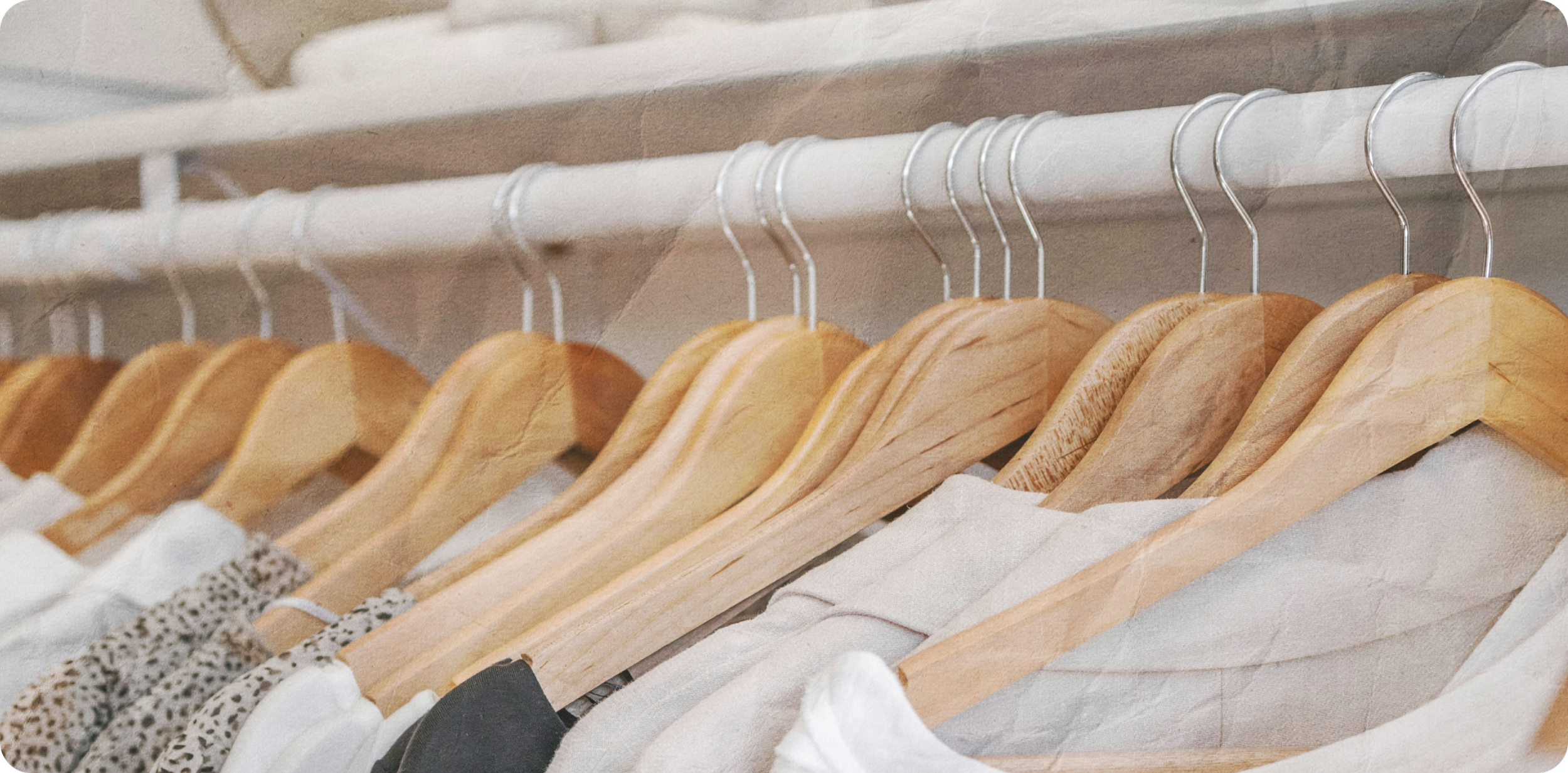Break Up With Fast Fashion: Sustainable Swaps for a Conscious Closet
Break Up With Fast Fashion: Sustainable Swaps for a Conscious Closet
Author: Team Grove
Most of us don’t think twice about what our clothes are made of — but here’s a stat that might change that: 60–70% of clothing today is made from plastic.¹² Yep, your favorite leggings, that cozy fleece, even your “cotton-blend” basics could be shedding tiny bits of synthetic fiber into the air, water, and your home.
Secondhand is the new chic: why thrifting wins
So what’s the alternative? Before diving into brand-new sustainable pieces (which we love, but aren’t always the most accessible), let’s talk about one of the simplest, most impactful swaps you can make: secondhand shopping.
Thrifting isn’t just a budget-friendly habit — it’s a powerful tool against fast fashion. When you buy secondhand, you’re not only keeping clothing out of landfills, but you’re also avoiding the emissions, water use, and chemical exposure that come with new production.
An added bonus is older garments are often better made and less likely to contain new chemical treatments (think wrinkle-resist sprays, synthetic dyes, or waterproofing chemicals). In short: it’s a win for the planet and your home.
Quick thrifting tips:
Prioritize natural fibers like cotton, hemp, linen, and wool.
Trust your hands — feel for softness and durability.
Think timeless over trendy. The longer you’ll wear it, the better the impact.
3 clothing categories worth swapping first
If you’re feeling overwhelmed by your wardrobe, don’t worry—you don’t have to overhaul everything at once. A great place to begin is by focusing on the categories that have the biggest environmental and health impact.
Here’s where you’ll get the most bang for your eco-buck:
Synthetics-heavy activewear: These pieces shed microplastics in the wash and often contain PFAs, a class of chemicals linked to hormone disruption and immune issues.³
Fast fashion basics: T-shirts, tanks, and low-cost dresses may be cheap up front but often end up in the trash after a few wears. Opt for secondhand or higher-quality, longer-lasting options.
Undergarments & socks: While not usually secondhand-friendly, swapping these for organic cotton versions can reduce your exposure to skin-contact chemicals like phthalates and formaldehyde donors.
How to choose a takeback program that actually works
Now that you’re thinking about what to phase out, the next step is figuring out where those pieces should go. The last thing we want is to toss them into the trash, only to end up in landfills or incinerators. Enter: takeback programs. But not all are created equal.
Look for programs that:
Accept all brands and conditions — not just their own products.
Are transparent about what happens to your clothes (recycled, resold, or landfilled).
Offer data or impact reporting so you know it’s not just greenwashing.
Beware of programs that take your items with no clarity on end-of-life outcomes. If it feels vague, it probably is.
Meet Trashie: a fresh take on takeback
Speaking of takeback programs that get it right, Trashie is flipping the script on fashion waste. Founded by Kristy Caylor who was frustrated by the progress in the fashion industry, Trashie’s Take Back Bag® lets you send in unwanted clothing, shoes, and accessories—no matter the brand or condition.
Here’s why Trashie stands out:
You get a prepaid bag and fill it at your own pace.
Trashie ensures items are resold, recycled, or responsibly processed.
You earn TrashieCash™ to use toward future purchases or donate.
It’s circular, it’s easy, and it’s actually making a dent in fashion waste.
Start small, swap smart
Fast fashion isn’t just an environmental issue — it’s a human health one, too. From the microplastics in your leggings to the endocrine disruptors in your bras, what you wear matters.
But here’s the good news: Every single swap makes a difference.
So maybe this week, you donate what no longer serves you. Maybe next month, you thrift instead of buying new. Or maybe you send off a Take Back Bag® and finally clean out that “I’ll deal with it later” drawer.
Whatever your next step looks like, know this: you don’t have to go it alone. Grove is here to support your journey — one thoughtful decision at a time.
Sources:
1 United Nations Environment Programme. (2023). Fashion’s tiny hidden secret. https://www.unep.org/news-and-stories/story/fashions-tiny-hidden-secret
2 Fibershed. (2022). Plastics: The hidden beauty ingredient in our clothes. https://fibershed.org/wp-content/uploads/2023/02/Plastics_Whitepaper_FINAL_15.11.2022.pdf
3 Dalla Fontana, G., Mossotti, R., & Montarsolo, A. (2020). Assessment of microplastics release from polyester fabrics: The impact of different washing conditions. Environmental Pollution, 264, 113960. https://doi.org/10.1016/j.envpol.2020.113960


